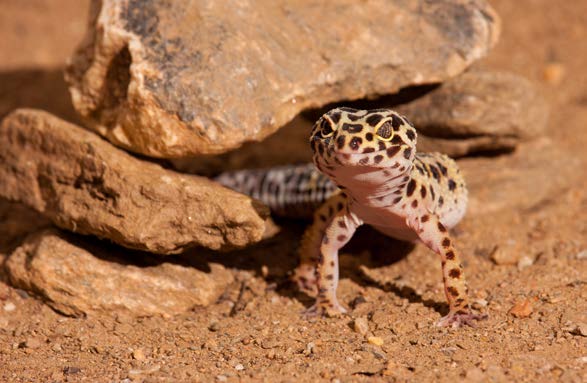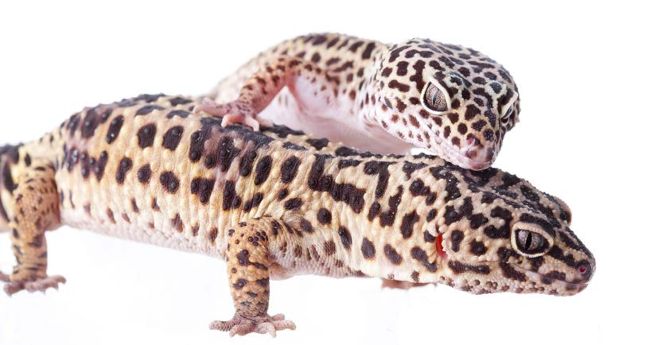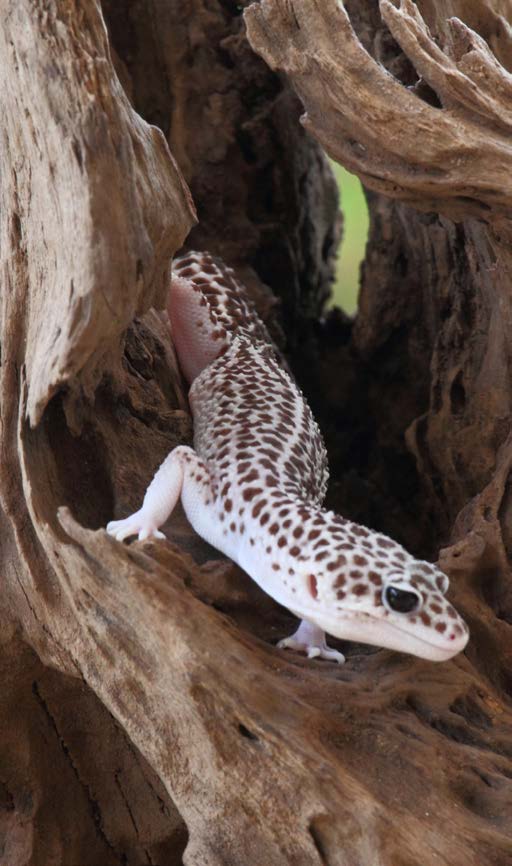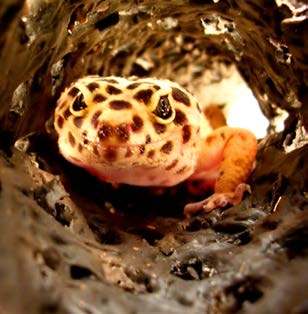LEOPARD GECKO
Insights into the leopard gecko
In the third and concluding part of his series of articles on advances in the care of leopard geckos, John Courteney-Smith MRSB of Arcadia Reptile explains how using the latest knowledge and equipment enables you to see more of the natural behaviour of these popular and fascinating lizards.
Part 3

Photo courtesy Eric Isselee/www.shutterstock.com
A territorial nature
Male leopard geckos are very territorial and cannot be kept together -even a male’s offspring of the same gender are likely to end up being eaten if they are housed together. It is possible to keep females in small groups, but they should be introduced to the enclosure at the same time. They must also all be of similar size, to minimise the risk of bullying, which can trigger a downward spiral, leading to a progressive loss of condition in the weaker individuals over a period of time.
Nevertheless, I am aware of experienced keepers who have recently created very large enclosures of at least 1.8m (6ft) in length, allowing them to house a full social group of an alpha male with 3-4 females. I cannot yet suggest that this method is safe for all, but simply for those enthusiasts with experience and a watchful eye. But once the parameters are better understood, I think this could be a fascinating way to keep these lizards, providing new insights into their communal behaviour.

These geckos are equipped to live under quite harsh conditions in the
wild.
Photo courtesy DanielSnake/www.
shutterstock.com

A pair of leopard geckos. It is now proving possible -with care and plenty of space -to house these geckos as they would live in the
wild.
Photo courtesy cellistka/www.shutterstock. com
Harsh environments
The leopard gecko is a robust and highly adaptable animal, wellequipped to survive in what can become seasonally quite harsh surroundings in the wild. It is therefore not a coincidence that this was one of the first species to become established in the hobby, able to survive in rather barren and artificial systems that predominated at that stage, with little dedicated equipment available either. Not only did these resilient geckos survive though, but they also bred successfully and in surprisingly large numbers.
This poses a number of questions of course. If this level of basic care did not mirror the lizard’s wild environment in full, but still allowed effective long-term captive breeding, can it therefore be viewed as being both effective and ethical? Surely these are two of the benchmarks for progressive reptile keeping?

Successful regular breedings of leopard geckos have taken place for many decades now. Here a youngster, displaying the characteristic striped patterning, emerges from its egg.
Photo courtesy Spok83/www.shutterstock.com

In spite of lacking toe pads, these geckos will climb readily if the opportunity presents itself.
Photo courtesy Dwi Yoga Pujo Laksone/www.shutterstock.com

Leopard geckos will use tunnels provided in their quarters.
Photo courtesy Jackie Smithson/www. shutterstock.com
The answer to these questions can only be given at a personal level. It is true that many leopard geckos were kept in a less than ideal way in the early days, and yet were adored and maintained with the very highest standards of care as existed at that stage by their owners, based on the knowledge of that period.
Yet it is also worth highlighting the fact of course that in the wild, conditions are not always ideal for a species, with food sometimes being short for example, and, in the case of the leopard gecko’s habitat, the climate may turn excessively cold. Yet unless the environment becomes almost uninhabitable for the species, so breeding is likely to continue -albeit not with the same degree of success as usual -in the anticipation of better times ahead.